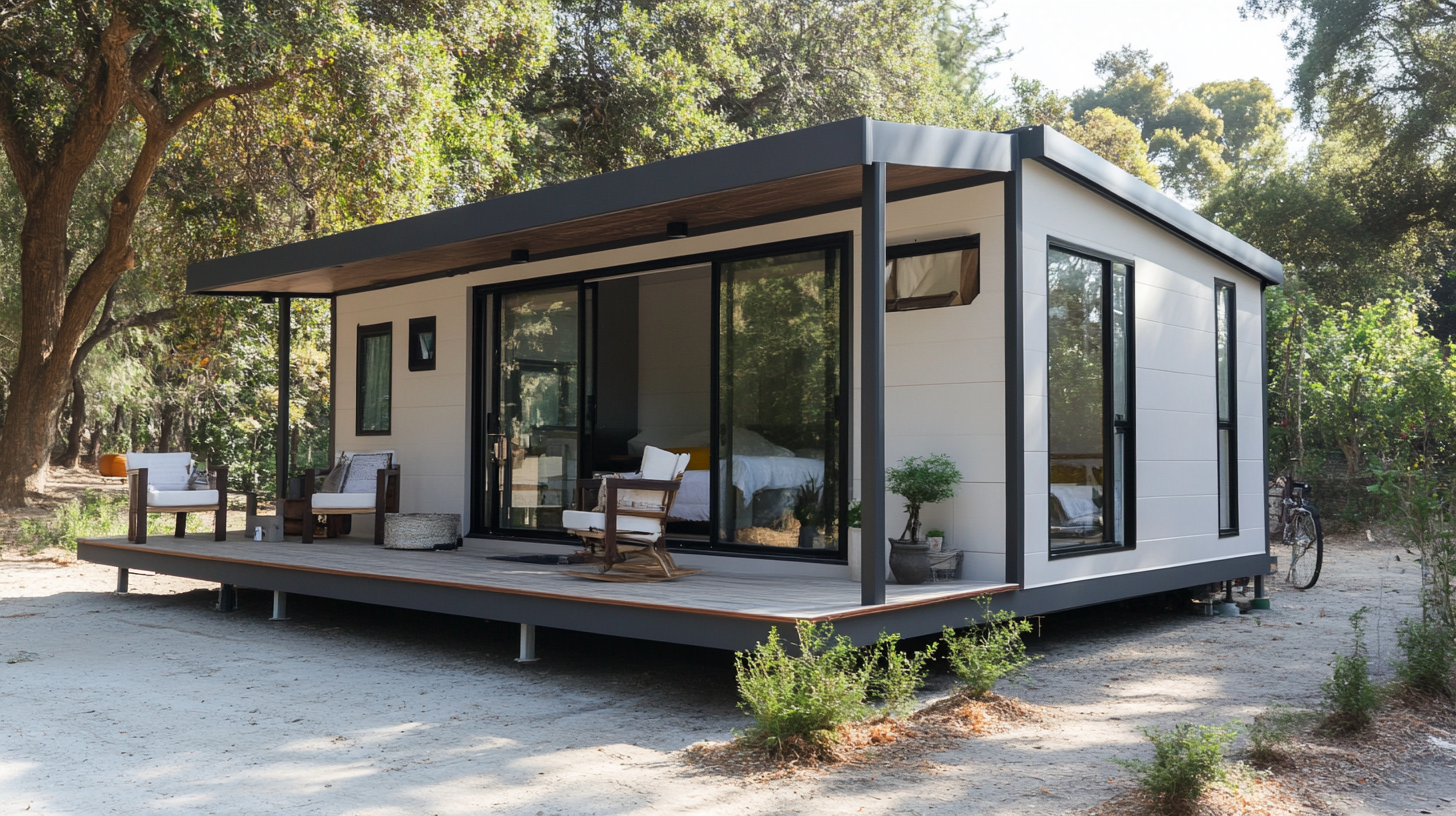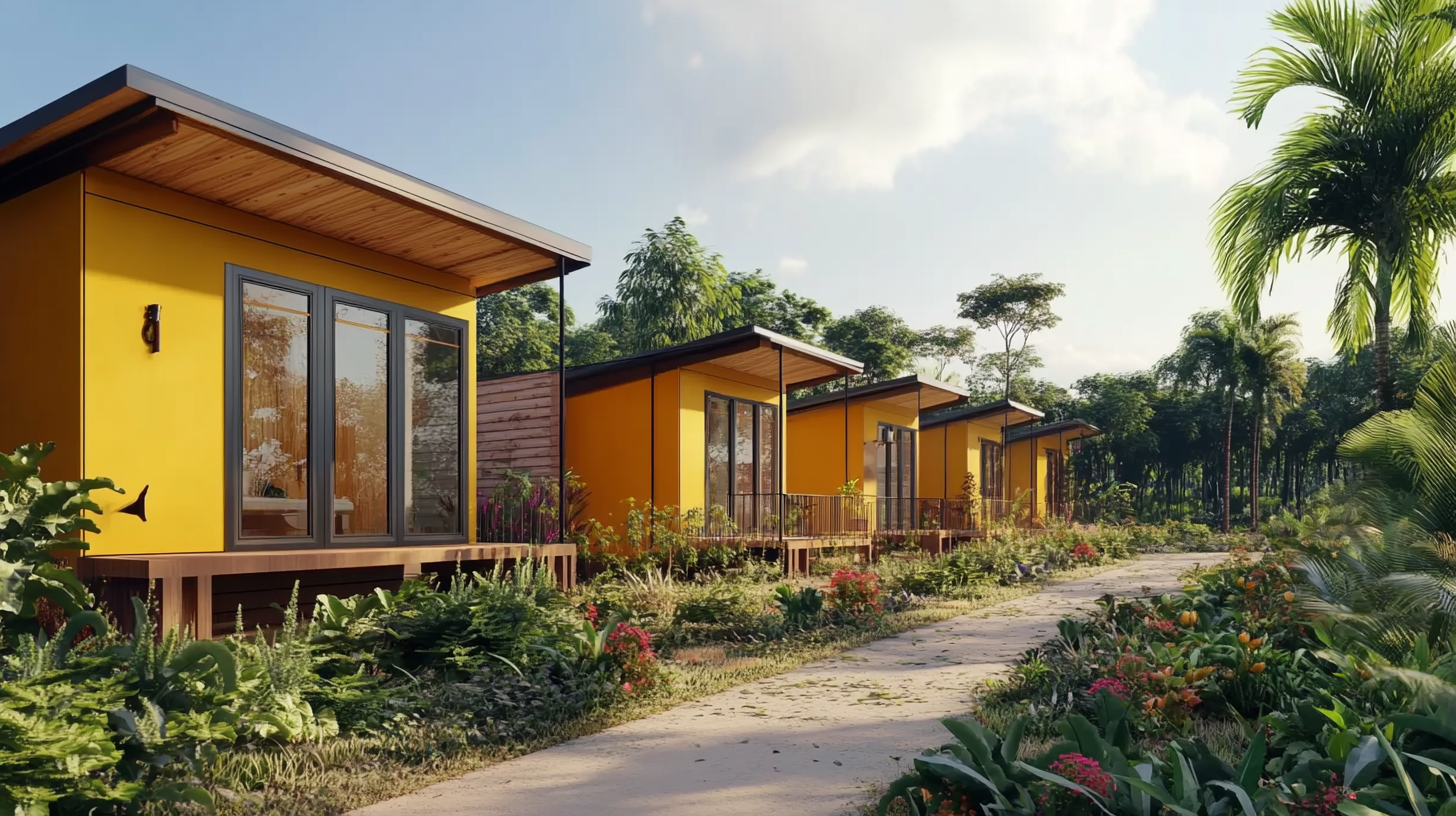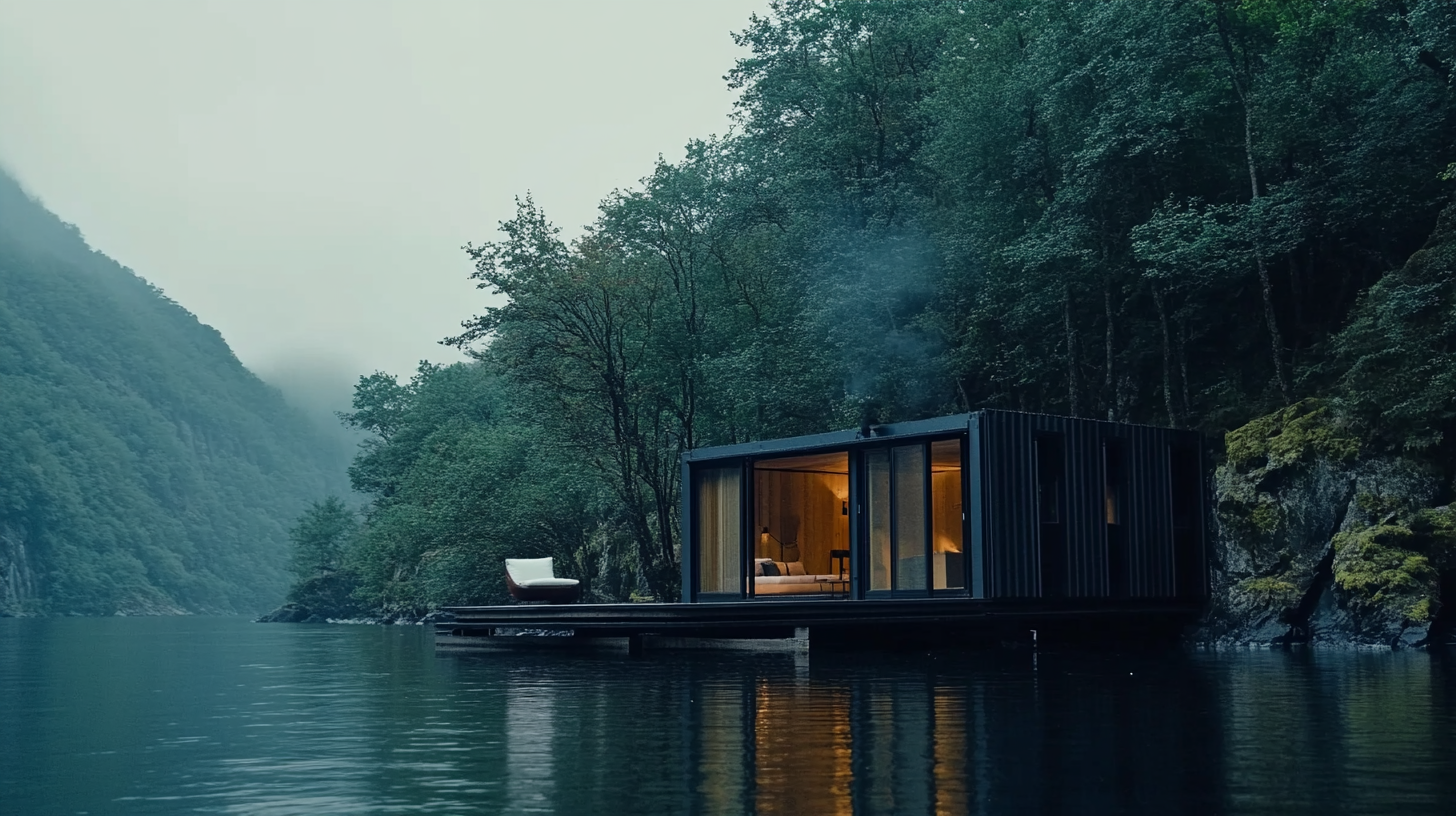The rising popularity of affordable prefab cabins has captured the attention of global buyers seeking cost-effective and versatile housing solutions. These innovative structures offer a convenient alternative to traditional building methods, promising quicker assembly times and reduced construction costs. However, as the market for affordable prefab cabins expands, consumers face a myriad of challenges when sourcing these products across different regions and supply chains.
From navigating varying regulations to understanding material availability, global buyers must equip themselves with knowledge to make informed decisions. The quest for affordable prefab cabins is complicated by factors such as fluctuating shipping costs, cultural perceptions of prefabrication, and the desire for customization, which can influence both price and accessibility. In this blog, we will explore these challenges in detail, providing insights that can help prospective buyers overcome obstacles while maximizing the benefits of choosing affordable prefab cabins for their housing needs.

Understanding the Global Demand for Affordable Prefab Cabins
In recent years, the demand for affordable prefab cabins has surged across the globe. As urban living becomes increasingly expensive, many individuals and families are seeking alternative housing solutions that are both economical and sustainable. Prefabricated cabins, known for their quick assembly and reduced construction costs, are becoming an attractive option for those looking to downsize, escape to nature, or invest in vacation rentals.
This growing interest is driven by a combination of factors, including lifestyle changes, environmental awareness, and a desire for mobility. The modern consumer increasingly values simplicity and minimalism, often opting for homes that foster a connection to nature while lowering their ecological footprint. Additionally, many governments are supporting initiatives that promote affordable housing options, further propelling the prefab cabin market. As global buyers look for versatile and budget-friendly solutions, suppliers and manufacturers must adapt to diverse regional needs and preferences, creating challenges in the sourcing and distribution of these innovative structures.
The evolving landscape of remote work has also played a pivotal role in the increasing demand for prefab cabins. As people seek to escape the hustle and bustle of city life, many are looking for serene getaways equipped with basic amenities. This trend not only highlights the desire for affordable housing but also opens up opportunities for developers and entrepreneurs to tap into niche markets catering to eco-tourism and alternative living arrangements. Understanding these dynamics is crucial for anyone looking to embark on sourcing affordable prefab cabins in today’s competitive global marketplace.
When it comes to sourcing prefabricated structures, global buyers often face a myriad of challenges that can complicate the procurement process. One of the most significant hurdles is the disparity in manufacturing standards across countries. Different regions prioritize various building codes and safety regulations, which can lead to confusion and complications when selecting a supplier. Buyers must thoroughly understand these standards to ensure compliance and avoid costly delays.
Another pressing challenge is the logistics involved in transporting prefab cabins from manufacturer to site. Irregular shipping schedules, fluctuating freight rates, and customs regulations can all impact the timely delivery of products. Buyers need to have a well-structured logistics plan, taking into account potential delays that may arise due to unforeseen circumstances, such as political unrest or natural disasters.
Additionally, the sourcing process can be hampered by language barriers and cultural differences. Effective communication is essential for negotiation and relationship building, but language discrepancies can lead to misunderstandings and misinterpretations of contract terms. Cultural norms surrounding business practices also vary widely, which can affect negotiations and overall cooperation between buyers and suppliers. It’s crucial for global buyers to invest time in understanding these cultural nuances to facilitate smoother transactions.

The construction of prefab cabins has gained significant popularity in recent years, particularly among global buyers seeking cost-effective housing solutions. However, various factors influence the overall cost of these units, making it essential for potential buyers to understand the dynamics of the prefab market. According to a report by Grand View Research, the global modular construction market is expected to reach $157 billion by 2025, highlighting a growing trend in prefab cabin investments.
One of the primary factors affecting the cost is material selection. Buyers have a range of options from timber to steel and composite materials, each with its unique cost implications. For instance, using high-quality timber might increase initial costs by 15-20%, yet it can enhance durability, reducing long-term maintenance expenses. Furthermore, transportation costs can significantly influence the final price, especially for buyers located in remote areas. A study by the Modular Building Institute suggests that logistics can account for up to 10% of the total project cost, making it a crucial consideration for buyers.
In addition to materials and logistics, local regulations and land costs play pivotal roles in determining the affordability of prefab cabins. Each region has specific building codes and zoning laws, which can lead to procurement delays and unforeseen expenses. The Housing Industry Association reports that compliance with local regulations can escalate project costs by as much as 30% in certain areas. Understanding these factors empowers global buyers to make informed decisions when sourcing affordable prefab cabins.

Navigating import regulations and compliance for prefab cabins is a crucial challenge faced by global buyers in today's market. As the demand for affordable housing rises, particularly amid housing crises in various regions, understanding the intricate web of regulations becomes essential. Governments are increasingly relaxing planning laws for modular homes, especially in back gardens, to encourage their adoption and overcome housing shortages. This shift signifies a potential pathway for global buyers, who must remain vigilant about local laws and standards governing these structures.
Additionally, as modular and prefabricated homes gain traction, it's vital for buyers to stay informed about the codes that dictate these buildings' construction. In the United States, for example, modular homes are built to adhere to the same International Residential Code as traditional homes. This compliance not only ensures safety and quality but also simplifies the importing process, allowing buyers to navigate regulations more effectively. Recent updates in places like Virginia, which has adopted modular building standards, highlight the growing recognition of prefab homes as a viable solution to housing needs.
As countries like Canada grapple with their housing challenges, prefabricated structures are seen as a potential remedy. Buyers must familiarize themselves with applicable compliance requirements to capitalize on this opportunity, ensuring that imported cabins meet local building standards while also being affordable and efficient. Overall, staying informed and compliant is key for global buyers looking to harness the benefits of prefab cabin innovation in an increasingly competitive market.
Building sustainable supplier relationships in the prefab market is vital for global buyers looking to source affordable prefab cabins. Establishing a robust network of suppliers can pave the way for more competitive pricing, ensuring that buyers can meet the demand for budget-friendly options without compromising on quality. However, this requires a strategic approach to partnership and collaboration, where transparency and trust become the cornerstones of the relationship.
One of the key elements in fostering these relationships is open communication. Buyers must clearly articulate their needs and expectations while remaining receptive to suppliers' insights and capabilities. This dual exchange creates a collaborative environment that encourages suppliers to innovate and adapt their offerings to better serve the market. Additionally, investing in long-term relationships supports knowledge transfer and helps build expertise that benefits both parties, ultimately leading to sustainable growth.
Moreover, diversifying the supplier base can mitigate risks associated with sourcing. By engaging with multiple suppliers across different regions, buyers can not only secure more favorable terms but also enhance their resilience against market fluctuations or supply chain disruptions. Such diversification encourages suppliers to maintain competitive standards, benefiting buyers seeking affordable prefab cabins while promoting responsible sourcing practices that prioritize sustainability and ethical production methods in the prefab market.
